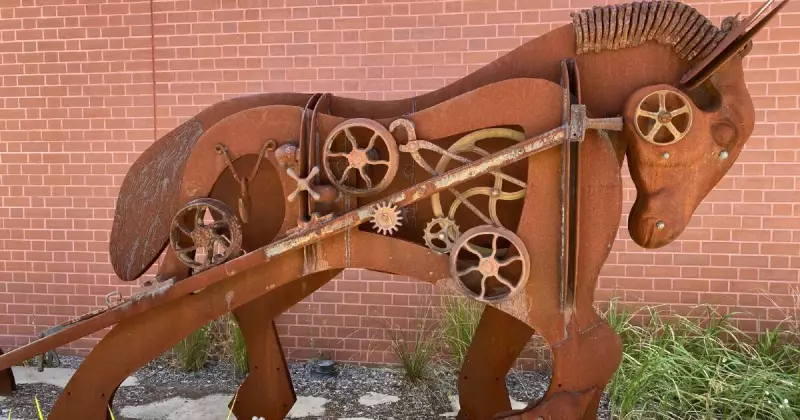
While Scotland celebrates its industrial heritage with the magnificent Falkirk Kelpies, the Hunter Valley's own tribute to working horses remains a quieter, yet deeply significant, part of our local history. These animals were the backbone of the coal industry, and their story is now being brought to light through public art and historical talks.
Scottish Giants and Local Legends
Towering over the Scottish landscape, the Falkirk Kelpies stand as a breathtaking monument to industrial history. These two massive steel horse heads, each 30 metres tall and weighing 300 tonnes, were unveiled in April 2024 after a decade-long project. While they represent mythical water creatures from folklore, they also serve a dual purpose: honouring the heavy horses like Clydesdales that once hauled barges along Scottish canals.
This international tribute to working horses raises questions about how we remember our own industrial past in the Hunter Valley. Fortunately, local efforts are ensuring these vital contributors to our region's development aren't forgotten.
The Forgotten Heroes of Hunter Mines
Author and coalmining expert Ed Tonks recently highlighted the crucial role of pit horses in his talk "The Forgotten Horses of Coal Mining" as part of Lake Macquarie City Council's History Illuminated program. Held at the fitting location of Sugar Valley Library Museum in West Wallsend, the presentation revealed how these animals were fundamental to mining operations for over a century before mechanisation.
More than 60 horses were needed at larger mines like John Darling at North Belmont until 1969, with individual animals remembered by names like Leo, Barney, Billy, Steve, Lou and Sam. These weren't small ponies despite the common term "pit pony" - they were substantial equines, with Tiger from Stockrington No. 2 pit near Minmi being remembered as particularly massive.
The hard-working animals lived in purpose-built underground stables between shifts, typically spending a week at a time below the surface. As Tonks explained, "Without them the internal transport systems of mines would have failed." Their importance was such that sick horses could bring mining operations to a complete halt.
Preserving the Legacy Through Art
The most striking local tribute to these animals stands outside the Sugar Valley Library Museum itself. Since 2023, artist Kelly-Ann Lees has immortalised Tiger as an impressive sheet metal sculpture that incorporates historic industrial objects like cogs, tools and wheels. This creative approach beautifully links the region's past with its present.
Additional recognition exists through murals and a public statue in Kurri Kurri's main street, though Tonks notes that the general public remains largely unaware of the horses' significant role. This oversight persists despite coal featuring prominently on the crests of Newcastle, Lake Macquarie and Cessnock councils.
Stockrington No. 2 mine was the last in the Hunter to use pit horses underground before their retirement just before Christmas 1983, with electric locos taking over their crucial work. The real Tiger was fortunate enough to be given to mining historian Brian Andrews to live out his retirement years at Killingworth.
The stories of these intelligent animals include remarkable survival instincts. Tonks shared one account where 50 horses stranded by flooding found high ground within the mine and survived when the waters subsided. Their care was paramount, with miners discovering that feeding chaff exclusively underground smoothed the horses' teeth, creating problems when they were eventually released to graze in surface paddocks.
Tragedy sometimes struck, as when a 1907 fire at Lambton B Colliery at Redhead claimed 21 of 24 horses, or when miners heroically saved 70 of 80 horses from a 1943 fire at Kitchener mine near Cessnock despite the escape shaft being deeper than 1000 feet.
The historical footprint of these animals extends to surprising locations. In the 19th century, the area that's now Nesca Park in Cooks Hill hosted a large colliery dam, with paddocks for pit horses stretching right up to the coast at Bar Beach and the car park above Susan Gilmore Beach.
In a final ironic twist, residents at Kahibah recently succeeded in having land officially named 'Pit Pony Park' - despite Tonks' objections - only for the park's sign to now clearly state: 'NO HORSES'. This contradiction perhaps perfectly captures how these essential contributors to the Hunter Valley's industrial development have slipped from memory, even as their legacy continues to shape our landscape and communities.





